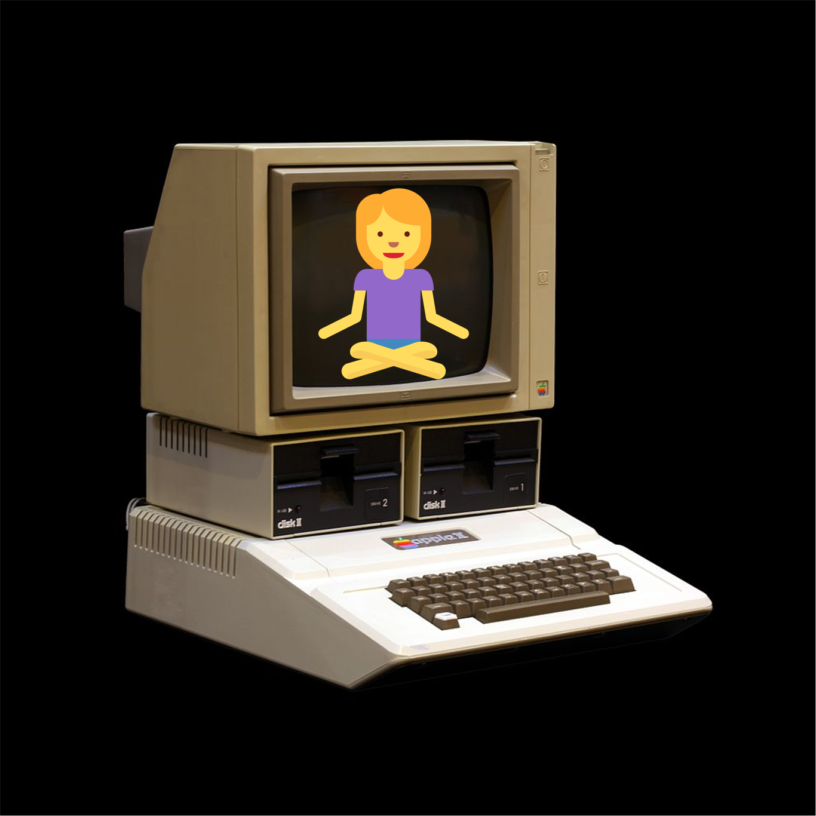In previous articles, we’ve explored a massive defunct podcast, a massive podcast on hiatus and podcast apps removed from the App Store. We will be continuing this term’s theme with a podcast that kept things short and sweet instead of overstaying its welcome.
Theme music by the mysterious Breakmaster Cylinder plays
This is Ra-Tan Lines, a tiny column about a big medium. I’m Ratan Varghese. Today in our article, the sound of fandom deconstructing itself, and why you don’t need to like a corporation to like to a podcast about its products.
The Man and the Message

Image Credit: Apple and Pear Australia Ltd via Flickr
The podcast in question is hosted by Mark Bramhill. Like many podcasters, he’s a smooth talker. His voice isn’t rough or nasal. He doesn’t sound as deep and awe-inspiring as Roman Mars of 99% Invisible. Instead, his voice is a bit higher and more excited. One gets the impression that Bramhill is genuinely enthusiastic about sound design, user interfaces, and the other things he talks about. The more substantial difference between the two podcasters is that Mars talks about everything under the sun in 99% Invisible. Bramhill, on the surface, only seems to discuss one thing.
In another comparison with 99% Invisible, Mark Bramhill doesn’t display much of his specialized knowledge. He is the host of every episode, but not necessarily the star; it’s a show full of interviews with other people. The podcast, at its best, is really an exploration into the experiences of other people, doing jobs that you never realized existed, in situations you never thought would arise. However, Roman Mars is willing to get controversial and even political if necessary. Bramhill isn’t. Welcome to Macintosh is for those moments of your life when you don’t want to think about the problems of the world. That is, unless the problems you care about have one particular corporation at their epicenter.
Yes, Welcome to Macintosh is a podcast about 🍎. There’s no trickery in the name. It’s not secretly about the 5061 McIntosh asteroid or the Mackintosh waterpoof raincoat. However Welcome to Macintosh is neither heaping with fawning praise, nor focused on the aspects of 🍎 depicted in headlines or advertisements. I can’t stress this enough: Bramhill does not try to convince people to buy 🍎 products. Bramhill assumes his listeners already love their iThings, and wants to hear the anecdotes tangentially related to the devices.
The Good Parts

Image credit: christels via pixnio
Okay, but what if you don’t particularly care about the iPhone, the Mac, app development or Steve Jobs? Never fear, we have a curated list of episodes that aren’t too deep inside the reality distortion field.
- 3: A Trip to alphaSyntauri
- 6: Somewhere in My Memory
- Miniseries about 🧘 emoji and Unicode: 1, 2, 3, 4
- 13: Let it Beep
- 16: Little Wrist Computer
- 18: If It’s Broke, Don’t Fix It
The episodes that aren’t listed are still good, but perhaps a little too 🍎-focused for a general audience. It is also worth noting that Welcome to Macintosh has it’s own list of “favorites”.
Episode 3 is one of the episodes that originally got me hooked: a story about a synthesizer connected to an 🍎 II and the opportunities it opened for its designer. As someone who knew nothing about synthesizers, I didn’t realize how important they were in 🐬 research.
Episodes 6 and 13 are both about alert sounds on 🍎 devices, the design behind them and the feelings they elicit in people. In general, podcasts about sounds are an excellent use of the medium.
Episode 16 is a really weird episode about how health metrics gathered from someone’s smartwatch changed his life. No prizes for guessing which smartwatch he was using. It’s the only episode of Welcome to Macintosh that describes a life-threatening situation, showing Bramhill’s willingness to break from his podcast’s comfort zone.
The miniseries about emoji is the crown jewel of Welcome to Macintosh, which details Bramhill’s journey to actually make an emoji and get it approved by The Powers That Be. The Powers in question aren’t just 🍎, but the nonprofit Unicode Consortium, whose non-emoji activities are investigated in part 4 of the miniseries. Yes, there is a discussion of 🍆, but there isn’t much about 🍎 specifically. Instead the role emoji plays in all our lives, and the bureaucracy and debates surrounding emoji are the spotlight.
Episode 18 is a fitting final episode. While ostensibly about 🍎 making their devices difficult to repair, the episode also depicts Mark Bramhill’s enthusiasm for 🍎 gradually crumbling away. It is the point where the podcast recognizes what 🍎 truly is: one of the most powerful corporations on the planet, entirely willing to throw sentiment to the wind in pursuit of power. There are other episodes where 🍎 behaves poorly, but they all feel less 😔 than the finale.
Wait, that’s it?

Image credit: Circe Denyer via needpix.com
Almost all the episodes are below 30 minutes long, the only exception is episode 18. Some of the “extras” are much lower than that, those are below 10 minutes. The bad news is that there isn’t room for much depth; some episodes are just a bunch of anecdotes told from one or two perspectives. The good news is episodes that you don’t like won’t linger.
Welcome to Macintosh stopped at episode 18, which was released in 2018. It was just shy of three years old. While it was around, it was beloved by other 🍎-focused podcasters and bloggers. It might not actually be dead. Mark Bramhill still has a Twitter account, and often retweets 🍎-related stuff. Maybe there are closely-guarded exclusives out there. The only thing that’s clear is that episode 18 is the final episode of Season 3, and no announcement of Season 4 has appeared in the podcast feed for years. In short, 😔.
Welcome to Macintosh was always an occasional delight, rather than a regular fixture. So perhaps it could return out of the blue someday. It’s not as though there’s a shortage of 🍎 news or 🍎 criticism. I don’t expect anything, but I am going to stay subscribed and hope.





Leave a Reply